






| Pseudeuophrys lanigera (Simon, 1871) |







|
|
Scientific name: Pseudeuophrys lanigera (Simon, 1871) Common name: French name: Order: Araneae Family: Salticidae Size: 3.5 to 6 mm for females, 2.6 to 5 mm for males. Biotope: On walls and inside buildings. Web: No web. Spiders of the salticidae family chase by looking at preys with their big size eyes. They move by jumping. Observation period: All year round. Geographic area: Western Europe extending eastwards, introduced to the United States. |
Pseudeuophrys lanigera is black coloured with brown, reddish and beige hairs. You can see a broad triangle-shaped pale marking on the cephalothorax. The upper side of the abdomen is marked with a pale longitudinal band which may show several chevrons. The legs are clearly ringed with black, reddish and white. Males have white pedipalps ending with a greyish bulb. The eyes are thinly circled with orange and underlined by thin bands of white hairs. Male Pseudeuophrys erratica have black pedipalp tips. It is sometimes difficult to tell apart females of both species because the above mentioned criteria are not always easy to evaluate and because of variations from one specimen to the other. |
| [To know more about the Pseudeuophrys lanigera] [Next picture] [Top] |
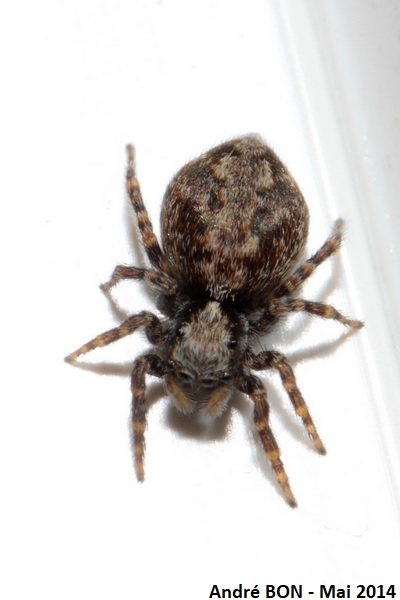
|
The pale triangle-shaped marking on the cephalothorax and the pale longitudinal band on the abdomen are a good indication for the Pseudeuophrys lanigera species. The location of the observation, inside the house, indicates the same species. However, notice that this one is a female and so there is still a possible confusion with Pseudeuophrys erratica. The swollen abdomen seems to indicate that this female is ready to lay its eggs. |
| [To know more about the Pseudeuophrys lanigera] [Next picture] [Previous picture] [Top] |
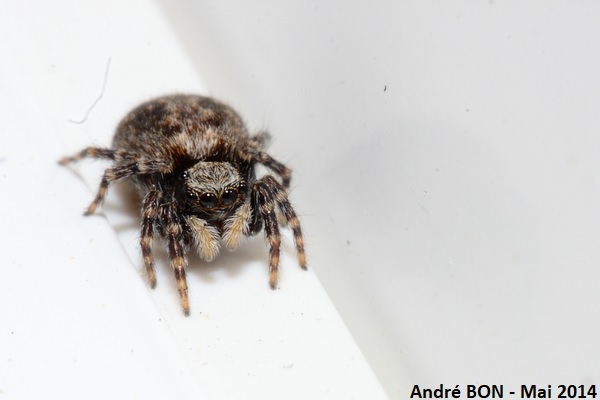
|
Front view. |
| [To know more about the Pseudeuophrys lanigera] [Next picture] [Previous picture] [Top] |

|
It looks like that this tiny spider does not want to be photographed. |
| [To know more about the Pseudeuophrys lanigera] [Next picture] [Previous picture] [Top] |
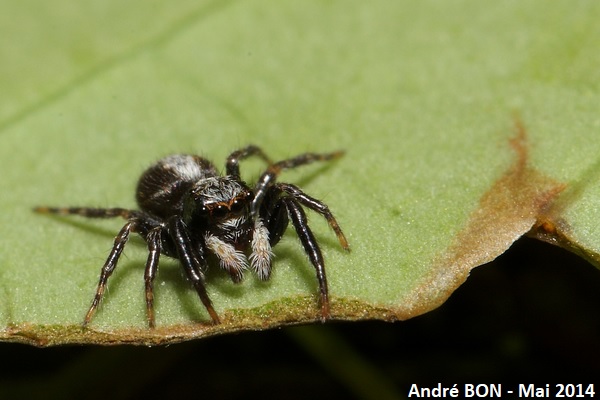
|
Here is one male for which I have got some species identification problems. The markings on the cephalothorax and abdomen do match the Pseudeuophrys lanigera species but the bulbs at the tip of the pedipalps appear very dark, rather black than greyish. So I have still a small remaining doubt concerning the Pseudeuophrys erratica species. |
| [To know more about the Pseudeuophrys lanigera] [Next picture] [Previous picture] [Top] |
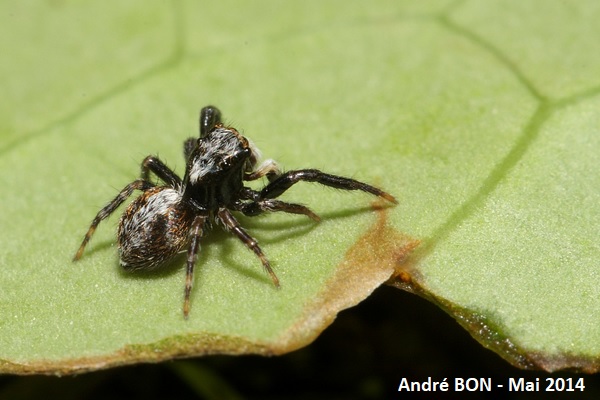
|
The markings on the abdomen and cephalothorax a better visible on this picture. |
| [To know more about the Pseudeuophrys lanigera] [Next picture] [Previous picture] [Top] |
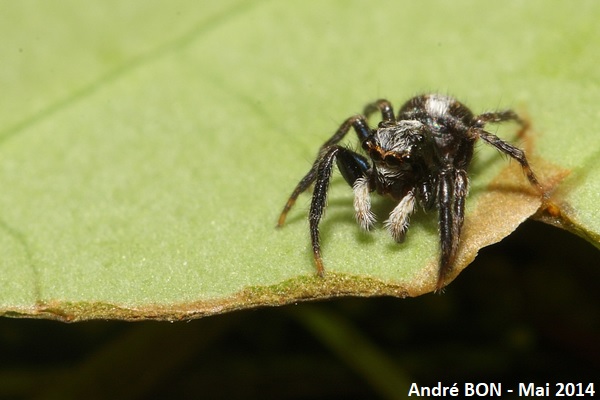
|
I have browed thru numerous photo galleries and I have never seen Pseudeuophrys erratica with such a longitudinal marking on the abdomen. This is more variable on the cephalothorax. So I have listed this one as Pseudeuophrys lanigera. Thanks to contact me if you think I am wrong. You can drop me a mail with the link at the bottom of this page. |
| [To know more about the Pseudeuophrys lanigera] [Previous picture] [Top] |
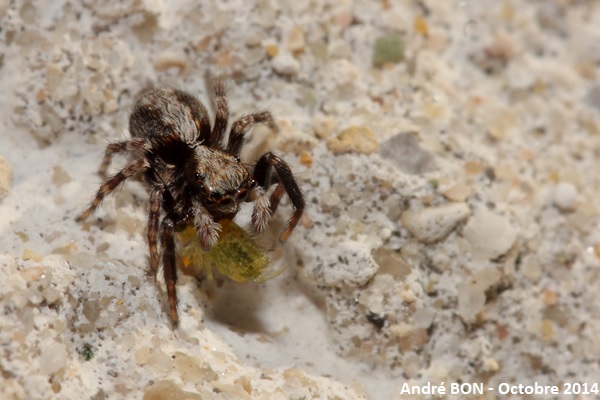
|
Springtail on the menu. |